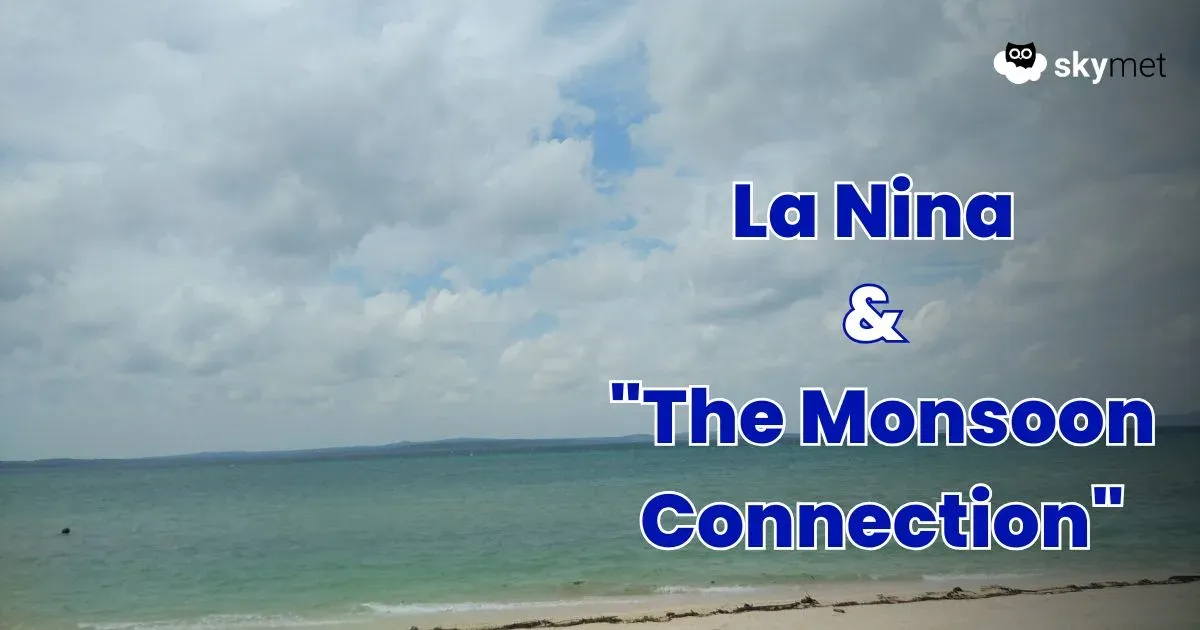Nino indices in the Pacific Ocean and IOD in the Indian Ocean have a strong bearing on the Indian Monsoon. Both these indices, by far, remained silent and yet the monsoon kept going strong. Even the intra-seasonal variability in the atmosphere (wind and pressure), which is often related to the Madden-Julian Oscillation (MJO), has been making brief appearances over the equatorial Indian Ocean.
Currently, it is also positioned over the Indian Ocean in Phase 2, but the key source of uncertainty concerns the predicted phase speed and its amplitude.
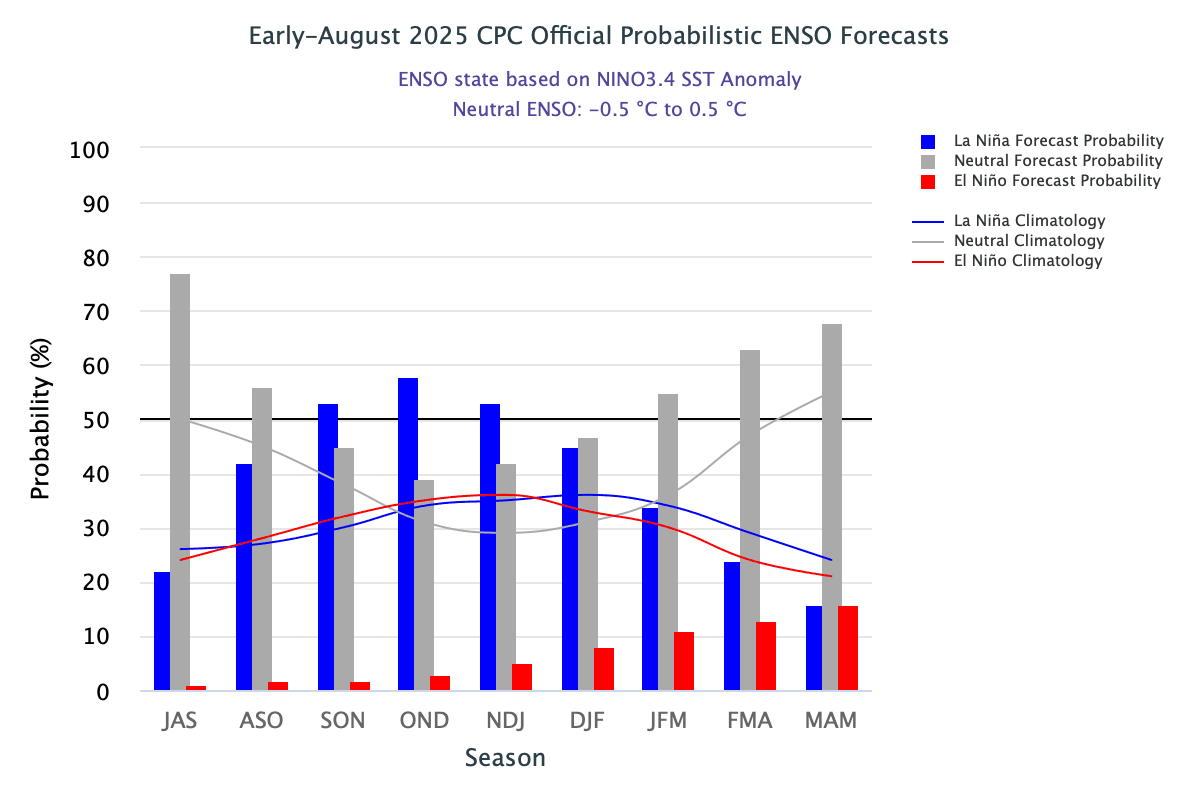
ENSO: Equatorial sea surface temperatures are near average across most of the Pacific Ocean. In the last four weeks, equatorial SSTs were average in the western and far eastern Pacific Ocean and were near-to-below average across the rest of the Pacific. The Climate Prediction Center (CPC) ENSO probabilities suggest ENSO-Neutral as the most likely category through the late Northern Hemispheric summer 2025. Thereafter, a brief period of La Niña conditions is favoured in the fall and early winter 2025–26, before reverting to ENSO-Neutral.
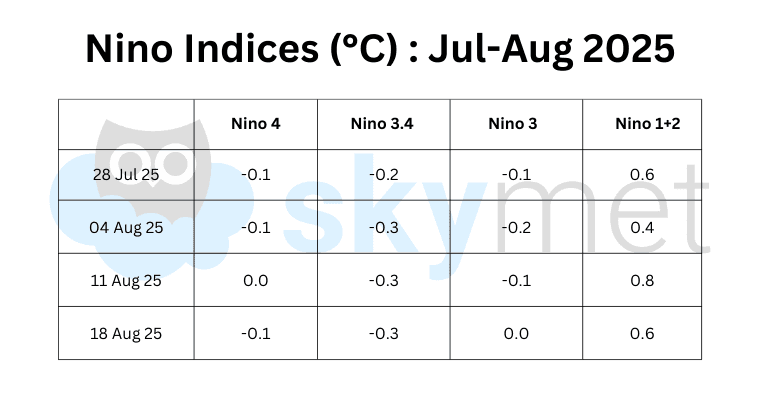
All the Nino indices, except Nino 1+2, have remained negative for the last five consecutive weeks. Nino 3.4, the marker index of ONI, was steady at -0.3°C for the last three successive weeks. The index is unlikely to cross over to the positive threshold during the summer monsoon. Even the ONI for three quarters in a row (MAM, AMJ, MJJ) has a continual read of -0.1°C. The temperature profile of the equatorial Pacific Ocean assures ENSO-Neutral conditions through the monsoon and early autumn of the Northern Hemisphere.
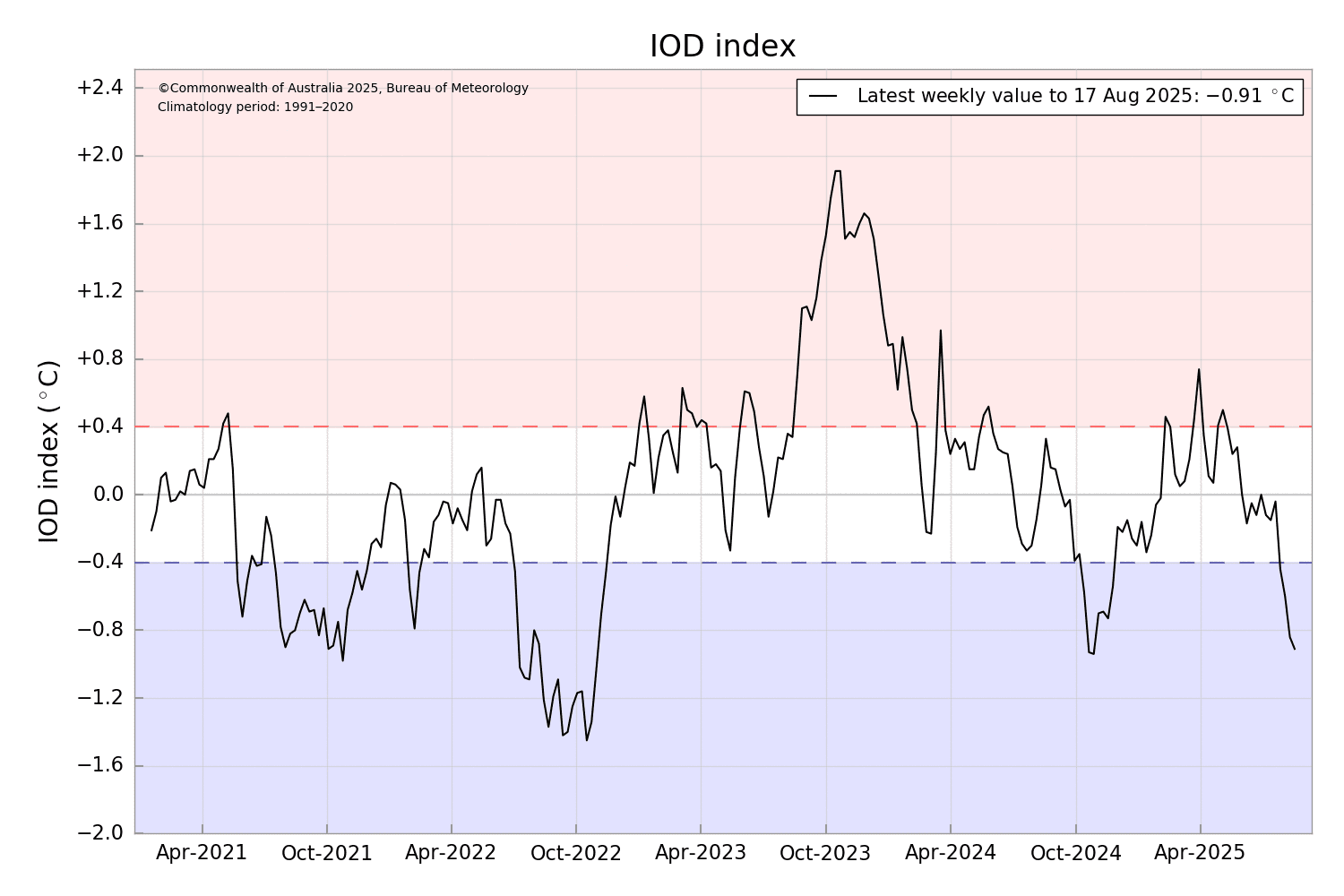
IOD: The Indian Ocean Dipole is neutral. However, the last four weeks of the IOD index have been below the negative IOD threshold. The latest IOD index value for the week ending 17 August was -0.91°C. Incidentally, this has been the lowest value of the index since October 2024. Sustained index values less than or equal to -0.4°C for at least eight weeks are typical of a negative IOD event. Development of a negative IOD event is increasingly likely. The BoM model predicts a negative IOD phase during Northern Hemispheric autumn and a return to neutral in early winters, consistent with the typical IOD life cycle.
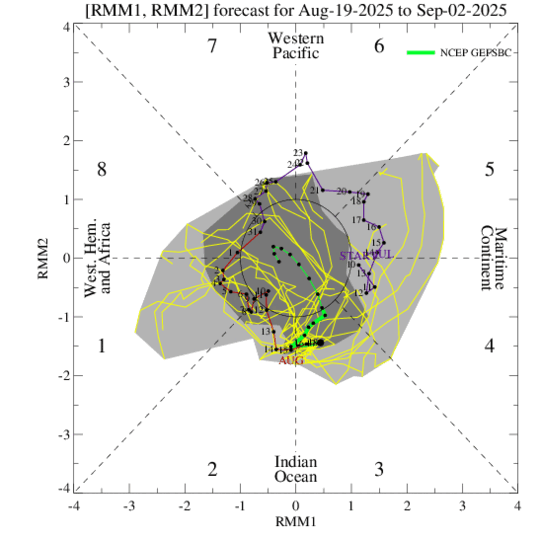
MJO: The Madden-Julian Oscillation has remained quite active since the start of August while it propagated across the Western Hemisphere. It has now entered the Indian Ocean in Phase 2. There is general agreement amongst the models favouring an MJO propagation from the Indian Ocean into the Maritime Continent in the next few weeks. However, its diminishing amplitude remains a concern and it may not support an active monsoon over the Indian seas in the closing days of August 2025.
IOD has a robust relationship with the Indian Summer Monsoon. In 2023, a strong El Niño year, the development of a positive IOD event in September saved the monsoon from the scare of drought. That August had failed miserably with a deficit of 36 percent rainfall. A negative IOD event may evolve earlier than expected in September 2025. Such an event tends to suppress monsoon rainfall, albeit the correlation of positive IOD is always stronger than the negative IOD with the Indian Monsoon.


